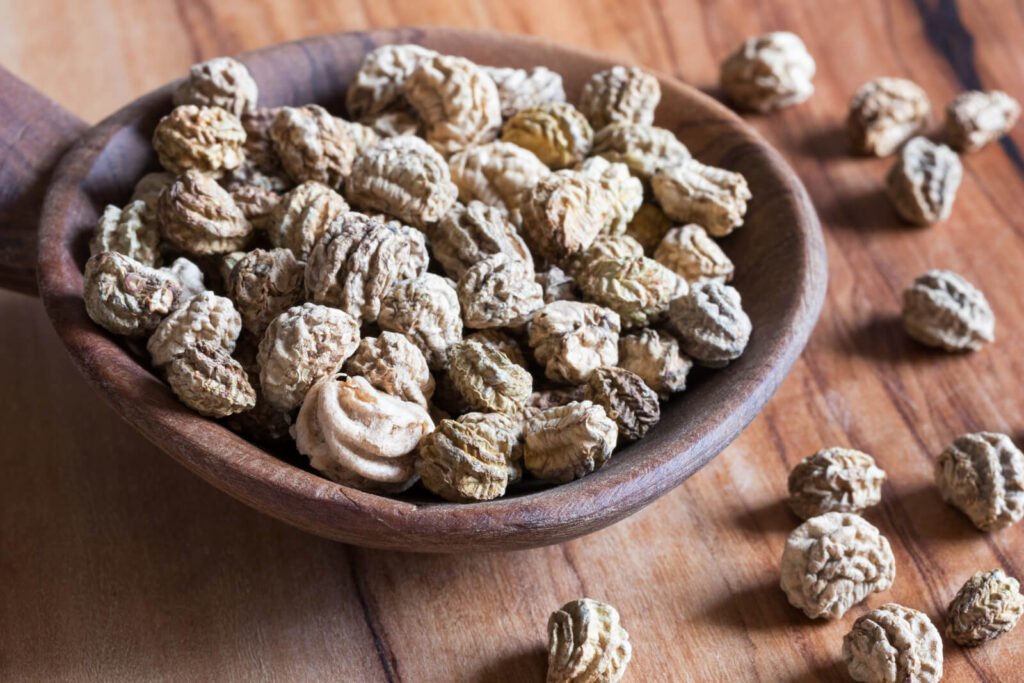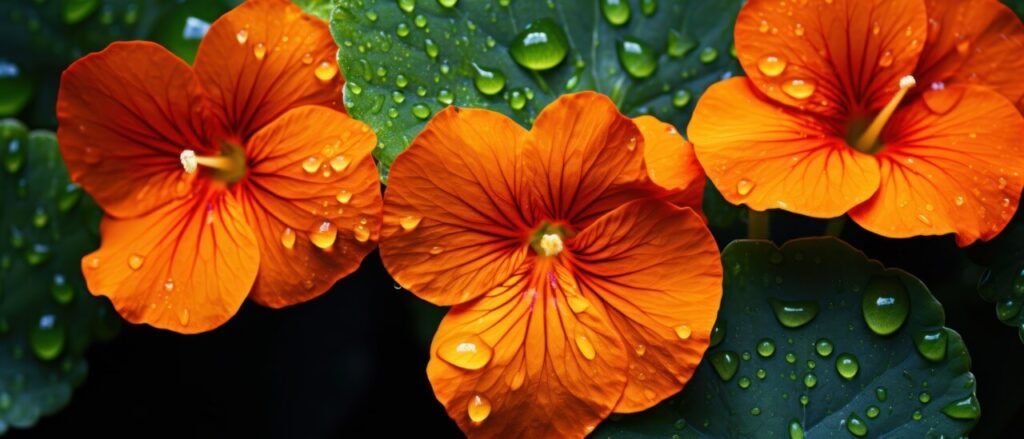Get ready to transform your garden into a lush and vibrant paradise with the power of nasturtium seeds. These organic and heirloom seeds are not only visually stunning, but they also bring a myriad of benefits to your garden. From adding a pop of color and a peppery punch to your salads to repelling pests and attracting pollinators, nasturtiums are a gardener’s dream.
Choosing and Planting Climbing Nasturtiums
If you’re looking to add vertical appeal to your garden, climbing nasturtiums are an excellent choice. These annual flowers can be trained to grow on fences, trellises, and arches, creating a stunning display of vibrant colors. With their vigorous stems that can reach up to 5-6 feet in length, climbing nasturtiums produce non-stop flowers from mid-summer until frost.
Climbing nasturtiums come in a wide range of brilliant shades, including red, orange, gold, pink, cream, and bi-colors. Their vibrant blooms attract bees and hummingbirds, adding a lively touch to your garden. These versatile plants can be grown in garden beds, containers, or left to trail along the ground as ground cover.
To get started, you have the option to directly sow climbing nasturtium seeds in the garden or start them indoors and transplant them later. They thrive in full sun and well-draining soil, so make sure to choose a suitable location for planting.
When planting climbing nasturtium seeds, space them 10-12 inches apart at the base of a trellis or other support structure. This will allow the vines to grow and climb easily, creating a beautiful vertical display. Transplanting climbing nasturtiums should be done after the danger of frost has passed. Take care not to disturb the delicate roots during the transplanting process.

If you prefer container gardening, climbing nasturtiums can also be grown in pots and hanging baskets. Just make sure to provide them with proper support and ample space for their vigorous growth.
Key Points:
- Climbing nasturtiums are perfect for growing vertically on fences, trellises, and arches.
- They produce non-stop flowers from mid-summer until frost in vibrant shades.
- Directly sow or start climbing nasturtium seeds indoors before transplanting.
- Plant them in full sun and well-draining soil, spacing them 10-12 inches apart at the base of a support structure.
- Consider growing climbing nasturtiums in containers and hanging baskets with proper support and space.
| Climbing Nasturtiums | Benefits |
|---|---|
| Vertical Growth | Adds height and visual interest to your garden |
| Non-Stop Flowers | Produces vibrant blooms from mid-summer until frost |
| Attracts Pollinators | Bees and hummingbirds are attracted to the colorful flowers |
| Flexible Planting Options | Can be grown in garden beds, containers, or as ground cover |
| Ease of Transplanting | Can be started indoors and transplanted to the garden |
Benefits and Uses of Nasturtiums in the Garden and Kitchen
Nasturtiums offer a range of benefits in the garden and the kitchen. They serve as natural pest control, repelling common garden pests such as aphids, whiteflies, and squash bugs. Nasturtiums also attract beneficial pollinators like bees, butterflies, and hummingbirds, promoting a healthy garden ecosystem. They improve soil health by drawing nutrients from deeper layers and making them available to nearby plants, making them ideal companion plants for vegetables like tomatoes, cucumbers, and brassicas.
In the kitchen, nasturtium flowers and leaves are edible and add a spicy, watercress-like flavor to salads, garnishes, and even pesto. The flowers can be gathered in the morning and stored in the refrigerator for up to two days. Nasturtium leaves can be used as a green lining for serving plates, chopped into summer salads, or dried and added to seasoning salts. The immature seeds can be pickled, but should be consumed in small amounts due to their high oxalic acid content.

“Nasturtiums are not only beautiful, but they also serve important functions in the garden. Their ability to repel pests and attract beneficial insects makes them a valuable asset for any gardener.”
Edible Nasturtium Flower Uses:
- Add fresh nasturtium flowers to salads for a vibrant and peppery flavor.
- Use nasturtium flowers as a colorful garnish for appetizers and main dishes.
- Create a unique pesto by blending nasturtium flowers with nuts, garlic, and olive oil.
Edible Nasturtium Leaf Uses:
- Line serving plates with nasturtium leaves for an attractive presentation.
- Chop nasturtium leaves and add them to summer salads for a spicy kick.
- Dry nasturtium leaves and use them in homemade seasoning salts.
Nasturtium Recipes:
| Recipe | Description |
|---|---|
| Nasturtium Salad | A refreshing salad featuring a mix of greens, nasturtium flowers, and a tangy vinaigrette dressing. |
| Nasturtium Pesto | A flavorful pesto made with fresh nasturtium leaves, cheese, nuts, and olive oil. Perfect for pasta or as a spread. |
| Pickled Nasturtium Buds | A tangy and crunchy snack made by pickling immature nasturtium seeds in vinegar and spices. Enjoy in moderation due to their high oxalic acid content. |

Try these delicious recipes and explore the many culinary possibilities of nasturtiums. Get creative with their edible flowers and leaves to add a unique twist to your meals.
Conclusion
Nasturtiums are versatile, colorful, and flavorful plants that are a great addition to any garden. These vibrant flowers not only provide aesthetic appeal with their beautiful colors and attractive foliage, but they also offer practical benefits for your garden and kitchen.
One of the key benefits of growing nasturtiums is their natural pest control abilities. These plants act as a repellent for common garden pests such as aphids, whiteflies, and squash bugs, keeping your garden free from harmful infestations. Additionally, nasturtiums attract beneficial pollinators like bees, butterflies, and hummingbirds, promoting a healthy ecosystem in your garden.
Not only are nasturtiums beneficial for your garden, but they also bring a unique flavor to your meals. Both the flowers and leaves of nasturtium plants are edible and add a spicy, watercress-like taste to salads, garnishes, and even pesto. You can also use the flowers to create a colorful and flavorful lining for serving plates or dry the leaves to add to seasoning salts.
Growing nasturtiums from seeds is a breeze, and they require minimal maintenance, making them suitable for gardeners of all skill levels.
Frequently Asked Questions
Q: What are nasturtium seeds?
A: Nasturtium seeds are the small, round seeds of the flowering plant known as nasturtium. They are often used for planting and growing lush gardens.
Q: What is the Alaska mix of nasturtium seeds?
A: The Alaska mix is a variety of nasturtium seeds that produce beautiful, bright flowers. These seeds are known for their cold tolerance and can be grown in a wide range of zones.
Q: How do I grow nasturtiums from seeds?
A: To grow nasturtiums from seeds, start by sowing the seeds directly into well-worked soil in the spring. Plant the seeds about 10 inches apart and cover them with a thin layer of soil. Keep the soil moist and wait for the seeds to germinate and produce seedlings.
Q: Can I grow nasturtiums in containers?
A: Yes, nasturtiums can be grown in containers. They are a compact plant that can be easily grown in beds or containers with high-quality, well-drained soil.
Q: What are the benefits of growing nasturtiums?
A: Growing nasturtiums offers several benefits. They are lovely, colorful flowers that add a cheerful and exotic touch to gardens. Nasturtium flowers are also edible and can be added to salads for a peppery flavor. Additionally, nasturtiums are known to repel pests, making them a natural pest control option for gardens.
Q: When should I plant nasturtium seeds?
A: Nasturtium seeds should be planted in the late spring or early summer, after the threat of frost has passed. This will ensure optimal growth and blooming during the late summer and early fall.
Q: Can nasturtiums be grown as a perennial?
A: Nasturtiums are typically grown as annuals, meaning they complete their life cycle in one year. However, in some warmer climates, they may behave as perennials and come back year after year.
Q: How far apart should I sow nasturtium seeds?
A: Nasturtium seeds should be sown about 10 inches apart to allow enough space for the plants to grow and spread. This spacing will prevent overcrowding and promote healthy growth.
Q: Do nasturtiums have any specific soil requirements?
A: Nasturtiums grow best in well-worked soil that is moist and well-drained. They are tolerant of a wide range of soil types and can adapt to different conditions.
Q: Can I start nasturtium seeds indoors before transplanting them outside?
A: Yes, you can start nasturtium seeds indoors to get a head start on the growing season. Sow the seeds in seed starting trays or pots, and transplant the seedlings outdoors once they are well-established.
